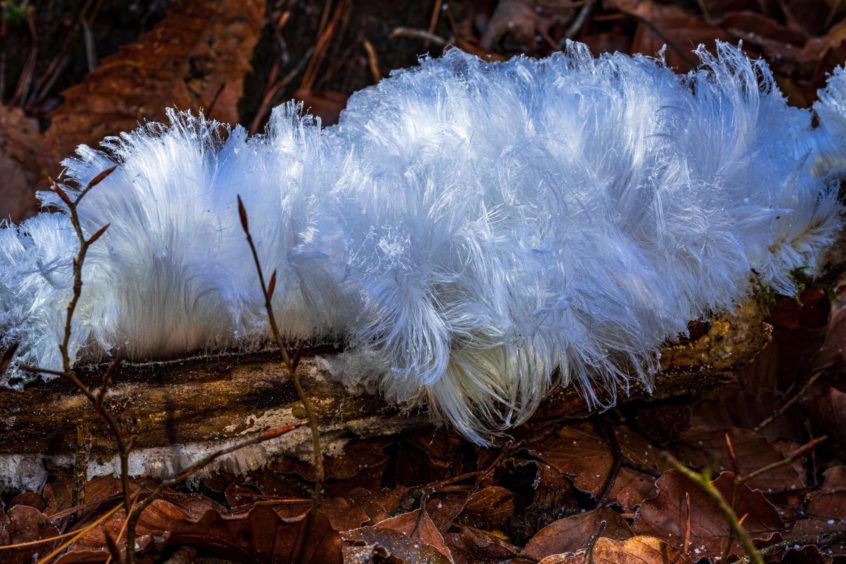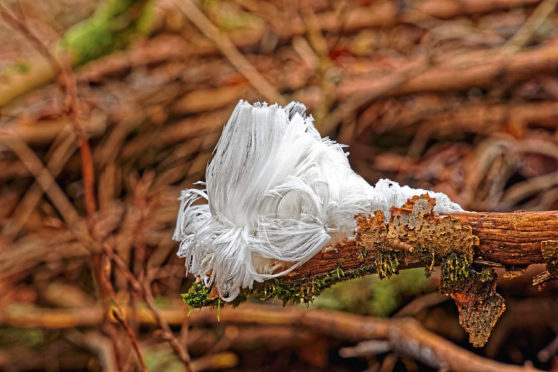A white glint against the dark tangled branches, so I paused to investigate, curious as to what it might be.
The soft crunch of frost gave gently under my feet as I veered away from the path and into the thick jumble of trees, drawn by this startling snowy paleness that shone brighter with each passing step. Upon reaching it, before my eyes lay a strange, wispy candyfloss structure that enwrapped a branch. It was ‘hair ice’, a most unusual ice formation created by the presence of a certain type of fungus.
I examined this wondrous creation closely, fascinated by its intricate thin white fibres, which looked like neatly combed hair. I gently touched some of these strands and they instantly disappeared, melting under the warmth of my fingers.
Also known as ice wool or frost beard, the conditions required for the formation of hair ice are extremely specific – a temperature slightly below 0 °C, moist and rotting wood, and the presence of a fungus called Exidiopsis effusa. In a complex process, the fungus causes a phenomenon known as ‘ice segregation’, which pushes water out of the wood pores, where it freezes and extends outwards into thin fibres of ice.
It was an intriguing discovery, and as I ventured back onto the path, several other patches of hair ice glowed from the woodland margins. The hair ice sparked my mind into overdrive, reflecting about the incredible diversity of nature and its capacity to continually surprise.
The previous week I had been lucky enough to stumble upon yellow brain fungus growing on an alder. Yellow brain is a most unusual looking fungus – an orange gelatinous mass with brain-like folds and lobes. This species has evolved to parasitise on another wood-rotting fungus. According to folklore, if yellow brain fungus appeared on the door of a house it meant that a witch had cast a spell on the family living there.

Jelly-ear fungus is also abundant during winter – a red-brown species that favours elders for gaining tenure, and on birches, look out for hoof fungus, which does indeed resemble a horse’s hoof.
I adore this time of year, winter’s grip is still strong, yet there are signs of spring all around, including the tiny green spears of snowdrops materialising on the ground and first early emergence of hazel catkins adorning branches. As spring approaches, these catkins will become fluffy and dangly, when they are most appropriately known as lambs’ tails.
Yellow-dazzled gorse is also in flower, albeit sparingly and not in the same splendour as in late spring. There is an old country saying that goes along the lines of ‘when gorse is out of bloom, kissing is out of season’ – a reflection of the fact that at least a few of its vibrant yellow flowers are likely to be in bloom no matter the time of year.
Info
The fibres on hair ice are typically shaped in curls and waves. They can maintain their shape for hours and sometimes days, if the conditions are right.










